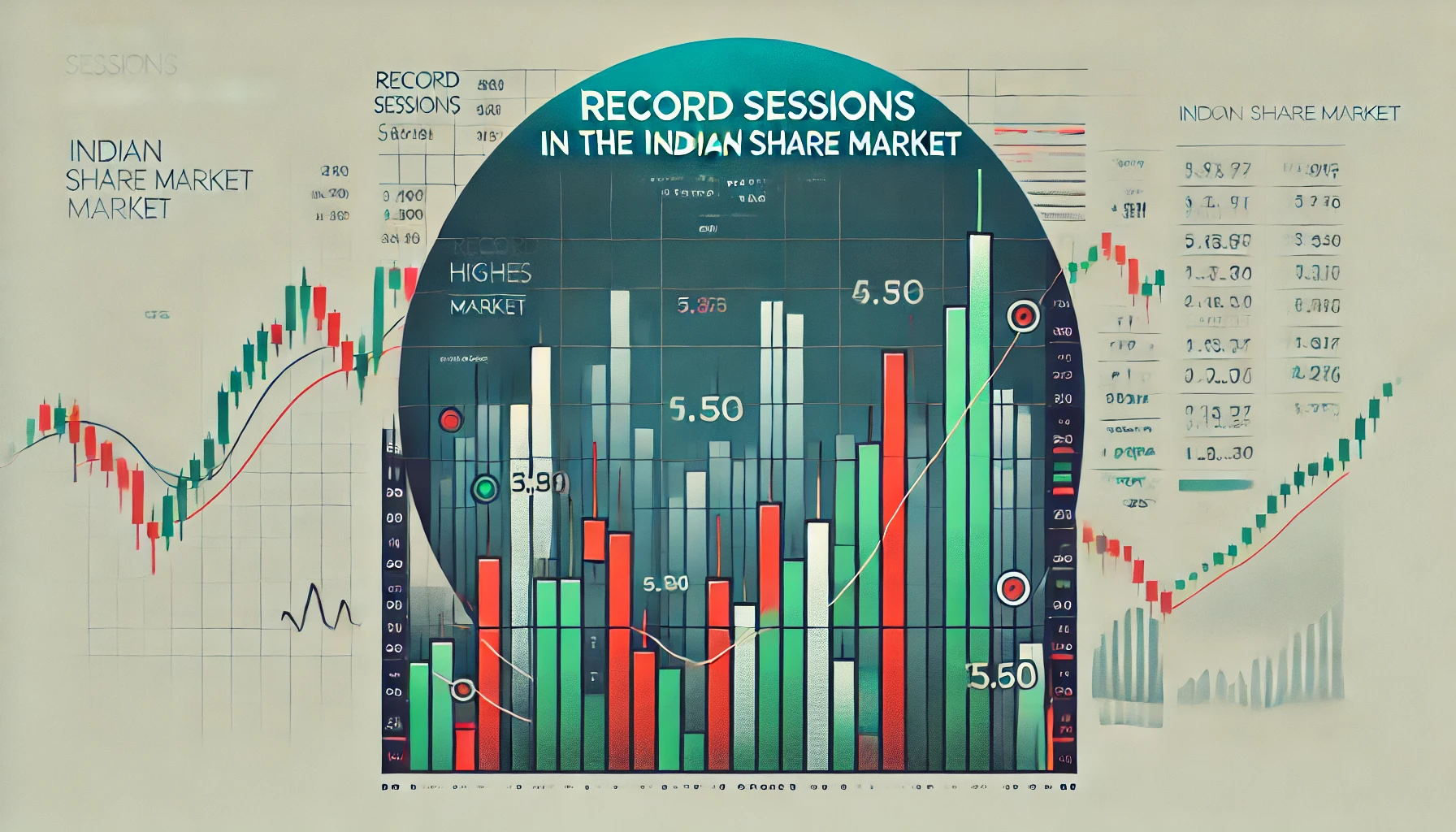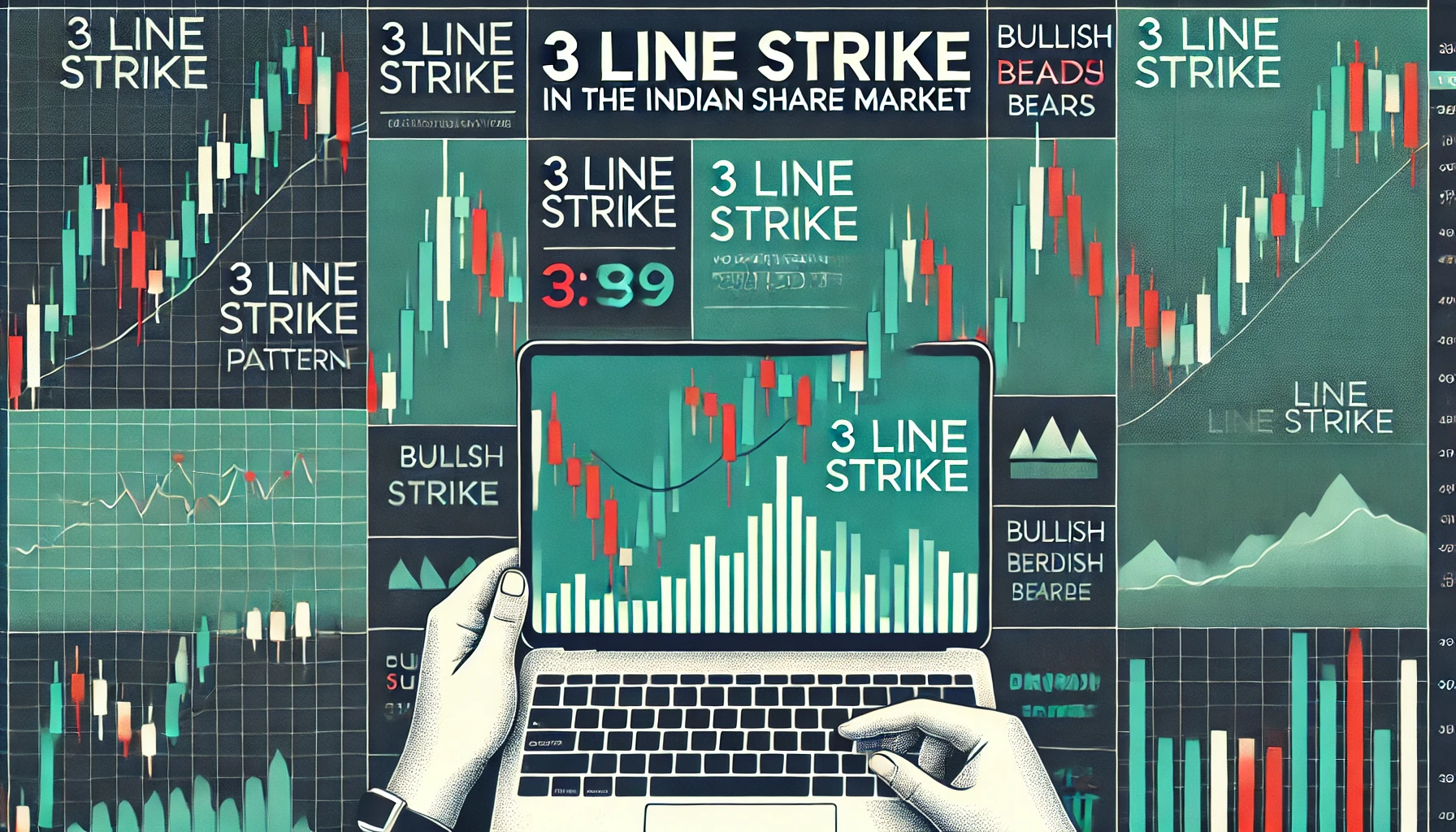The Indian share market is dynamic, with investors using various tools to gauge stock performance. One of the most insightful tools in technical analysis is the candlestick pattern. Among these, the Doji pattern stands out for its unique ability to signal indecision in the market. This blog delves into what the Doji pattern is, its different types, and how investors can use it to make informed decisions. We’ll also explore historical data from the Indian share market to see how the Doji has influenced price trends over time.
What is a Doji?
The Doji candlestick pattern occurs when a stock’s open and close prices are almost identical, creating a very narrow body. This represents market indecision, where neither buyers nor sellers have the upper hand. The pattern often suggests a potential reversal in the stock’s price direction, although its implications depend on the context in which it appears.
| Candlestick Characteristics | Doji Pattern |
|---|---|
| Open Price = Close Price | True |
| High Price = Low Price | False |
| Small Body, Long Wicks | Yes |
Types of Doji Patterns:
There are several variations of the Doji candlestick pattern, each with unique interpretations:
- Standard Doji:
- This is the most common type, where the stock’s opening and closing prices are almost the same.
- It indicates that the market is undecided about whether the stock’s price should rise or fall.
- Long-Legged Doji:
- The long wicks on both ends of this Doji represent significant price fluctuations during the trading period, followed by indecision.
- This suggests that despite volatility, the market is unsure of its direction.
- Dragonfly Doji:
- Characterized by a long lower wick and almost no upper wick, this pattern indicates that sellers were in control during the trading period, but buyers pushed the price back to the opening level by the close.
- It can be a bullish reversal signal when found at the end of a downtrend.
- Gravestone Doji:
- The inverse of the Dragonfly, this Doji has a long upper wick, suggesting that buyers pushed the price up, but sellers managed to pull it back down by the close.
- It is typically a bearish signal when seen at the end of an uptrend.
Interpreting Doji in the Indian Share Market
In the Indian share market, Doji patterns often signal a turning point in price trends. However, their significance varies depending on the surrounding candlesticks and the overall market environment.
- Doji in Uptrend: When a Doji appears in an uptrend, it signals indecision among investors. This may indicate that buyers are losing control, and a reversal or consolidation could follow.
- Doji in Downtrend: In a downtrend, a Doji can suggest that the selling pressure is weakening. This often precedes a price reversal, especially when confirmed by subsequent bullish patterns.
Historical Examples of Doji in the Indian Stock Market
Looking at historical data from the Indian stock market, we find several instances where the Doji pattern indicated major price movements. Below are some key examples:
- Nifty 50 (2018): In January 2018, a Dragonfly Doji appeared on the Nifty 50 chart after an extended downtrend. Over the next month, the index rallied by nearly 5%, confirming the Doji as a bullish reversal signal.
- Tata Motors (2020): In July 2020, a Gravestone Doji appeared at the peak of a sharp uptrend in Tata Motors stock. This was followed by a 15% decline over the next few weeks, validating the bearish reversal indication of the Doji.
| Stock/Index | Date | Doji Type | Resulting Trend |
|---|---|---|---|
| Nifty 50 | January 2018 | Dragonfly Doji | Bullish Reversal |
| Tata Motors | July 2020 | Gravestone Doji | Bearish Reversal |
Using Doji in Trading Strategies
The Doji pattern is best used in conjunction with other technical indicators, such as moving averages, support and resistance levels, and trendlines. Here are some popular strategies:
- Doji with Moving Averages: Combining the Doji pattern with moving averages can improve its accuracy. For instance, a Doji appearing near the 200-day moving average often signals a significant reversal point.
- Doji with RSI: When the Doji is paired with the Relative Strength Index (RSI), it becomes a more powerful tool. A Doji appearing in an overbought or oversold market, as indicated by the RSI, can reinforce the potential for a trend reversal.
- Doji with Volume: Volume plays a crucial role in confirming the Doji pattern. If a Doji appears with high trading volume, it increases the likelihood of a price reversal. Conversely, a low-volume Doji might indicate that the market is consolidating rather than reversing.
Limitations of the Doji Pattern
While the Doji is a reliable indicator of market indecision, it is not foolproof. False signals can occur, especially in volatile markets or when other indicators are ignored. Traders should always use the Doji pattern in combination with other technical analysis tools for better accuracy.
Key Takeaways:
- The Doji candlestick pattern is a powerful signal of market indecision, often foreshadowing price reversals.
- There are different types of Doji patterns, each with distinct implications based on the context in which they appear.
- Historical data from the Indian stock market shows that the Doji has been a reliable predictor of market trends in various instances.
- Traders should use the Doji in combination with other technical indicators, such as moving averages and RSI, to confirm its signals.
Conclusion:
The Doji candlestick pattern remains an essential tool for traders in the Indian share market. Its ability to reflect indecision makes it a valuable predictor of potential trend reversals. However, it’s essential to combine the Doji with other technical indicators for better accuracy. By understanding the nuances of this pattern and its historical significance, traders can make more informed decisions and capitalize on market movements.

What is the TRIN stock market indicator?
The TRIN (Trading Index), also referred to as the Arms Index, is a technical analysis …

Record Sessions
The Indian share market is a dynamic and volatile space where major highs and lows …

3 Line Strike
Candlestick patterns are a vital tool for traders in the stock market, offering insights into …

3 White Soldiers and 3 Black Crows
Candlestick patterns are a key element of technical analysis in stock trading, offering clear signals …

Gapping Doji
Candlestick patterns are a critical part of technical analysis in the stock market, providing traders …

3 Windows
Candlestick patterns are a vital part of technical analysis, offering traders and investors insights into …

2 Gapping Candles
In the fast-paced world of the Indian stock market, technical analysis plays a crucial role …

3 Inside Down and Up
Candlestick patterns are powerful tools in the world of technical analysis, offering traders insight into …

Bullish and Bearish Belt Hold
Technical analysis is an essential part of trading in the Indian share market. Candlestick patterns, …

Piercing and Dark Cloud Cover
In the ever-evolving Indian stock market, candlestick patterns are crucial for traders aiming to predict …

Double Doji
Candlestick patterns have long been a favored tool for technical traders to forecast market movements. …

Rising and Falling Windows
In the world of technical analysis, candlestick patterns are vital tools for traders to anticipate …

Tweezer Top and Bottom
In the fast-paced world of the Indian share market, traders use technical analysis tools to …

Morning Star and Evening Star
In the Indian share market, technical analysis is a valuable tool for traders aiming to …

Hammer and Hanging Man
The Indian stock market offers a wealth of opportunities for traders who understand technical analysis. …

Shooting Star and Inverted Hammer
The Indian stock market, with its dynamic nature, presents various opportunities for traders and investors. …

Last Engulfing
The Indian share market is filled with patterns that can help traders make informed decisions. …

Harami
In the world of stock market analysis, candlestick patterns offer valuable insights into price movements. …

Engulfing
The Indian share market is known for its volatility, and traders often rely on technical …

Marubozu
Candlestick patterns are powerful tools used by traders in the Indian share market to analyze …

Spinning Top
The Indian share market, like any other, experiences constant fluctuations due to a multitude of …

Doji
The Indian share market is dynamic, with investors using various tools to gauge stock performance. …

Double Top
In the world of technical analysis, chart patterns are valuable tools that help traders spot …

Tweezer
In the Indian share market, where volatility and price fluctuations are part of daily trading, …

Harami
In the world of technical analysis, candlestick patterns are powerful tools that help traders make …

Heiken-Ashi
Navigating the Indian share market can be challenging due to the inherent volatility and market …

Ichimoku
In the world of technical analysis, few indicators offer the comprehensive insights that the Ichimoku …

Value Charts
In the ever-changing landscape of the Indian share market, traders and investors need tools that …

Money Flow Index
In the Indian share market, identifying trends, understanding momentum, and assessing volume are critical components …

Aroon
In the fast-paced world of the Indian share market, identifying market trends and spotting reversals …

Gator Indicator
In the Indian share market, success is largely dependent on identifying the right trends and …

Adaptive Moving Average
In the dynamic and often volatile Indian share market, traders and investors continuously seek tools …

Coppock Curve
In the ever-evolving landscape of the Indian share market, traders and investors rely on technical …

Premier Stochastic Oscillator
In the fast-paced world of the Indian share market, technical indicators are indispensable tools that …

Dynamic RSI
The Indian share market is known for its volatility, with frequent shifts in trends influenced …

Vortex
The Indian share market offers plenty of opportunities for traders and investors to capitalize on …

Glitch Index
The Indian share market, like all financial markets, is prone to moments of irregular behavior—unexpected …

Triple Exponential Average
Navigating the Indian share market requires traders to use effective tools that help them track …

Know Sure Thing
The Indian share market presents countless opportunities for traders and investors, but making accurate decisions …

Mass Index
The Indian share market is volatile, with price trends constantly shifting due to numerous factors. …


















